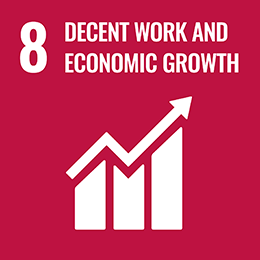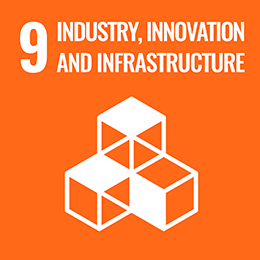Cities

Share this article
Street Smart
“By far the greatest and most admirable form of wisdom is that needed to plan and beautify cities and human communities” ― Socrates
Whether it is New York’s Greenwich Village or London’s Shoreditch, these neighbourhoods once home to artists and musicians are now gentrified for the Whole Foods-shopping neo-yuppie urbanite.
Housing no longer affordable even for Richard Florida’s ‘creative class’ that once inhabited these shabby colourful corners of the inner city. Nor for that matter the working classes that keep the cities functioning.
‘Ugly’ illegal graffiti replaced by street art painted with permission by artists marketing their work (which now hangs in high street galleries with eye-watering price tags). A caricature of gentrification that plays perfectly into the hands of film producers, activists and developers.
But is the town planner with a dystopian Blade Runner vision a better solution to socio-economic and spatial inequality? Is the future of cities a city of the future?
It depends on whom you ask.
Had Robert Moses, urban planner and New York City Parks Commissioner, had his way 50 years ago, a 10-lane elevated highway known as the Lower Manhattan Expressway would have cut through SoHo, Little Italy and destroyed Washington Square Park.
Goodbye boutiques and cupcake bakeries that now line the gentrified streets of Greenwich Village today. Instead, Jane Jacobs, then a journalist, mother and resident of the West Village, took it upon herself to protest. Successfully.
Jacobs, author of The Death & Life of Great American Cities, might have saved ‘The Village’ from a highway but in cities where land is limited gentrification is often inevitable. And unless there is careful consideration by town planners even well intentioned urban regeneration projects can give way to gentrification.
This David and Goliath urban legend is about the interplay between city dwellers and the economics that drives inner-city change. Take New York’s High Line as an example.
Originally, a privately funded community-based urban regeneration project intended to remove the eyesore of a disused suspended railway line in the Meatpacking District. But, by becoming a successful tourist attraction with more than 20 million visitors by July 2014, it also became the global poster child for the side effects of public/private funding of urban renewal projects.
When the high-end Zaha Hadid-inspired developments moved in¹, the average price of a flat in Manhattan’s Chelsea rose by 85%. From an investment perspective no-one complained. Yet a ‘successful’ city is more than just capitalising on the value of the land argues author, Richard Sennett.
In his new book Building and Dwelling: Ethics for the City², Sennett takes a closer look at the Jacobs versus Moses case and argues that the neighbourhood—the lived experience of urban life—and the bigger picture of a functional city are both essential components of a successful metropolis.
But why does a city need to be successful?
The easiest way to look at the city is as a country’s asset. This is how credit rating agencies such as Moody’s in the US and CRISIL, India’s equivalent that is part of Standard & Poor’s, view them when they issue municipal bonds. Today, US cities even have to factor in climate change to avoid downgrades.
A successful city is a destination for global property investments, tourism as well creative and academic brains. According to New World Cities Reshaping the Global Investment Landscape, London, Sydney and New York are the only established cities in the top 10 of JLL’s Investment Intensity Index with world cities Oslo, Munich, Edinburgh and Silicon Valley in the top five, indicating other factors are at play.
Looking at economic vibrancy, Schroders Global Cities Index has Los Angeles at the top spot with Hong Kong, London, New York and Shanghai next. Shenzhen, San José and Tel Aviv are Schroders cities to watch in 2018. From a sustainability perspective, Hong Kong, Zurich and Paris currently top the Arcadis Sustainable Cities Index 2017.
Sustainable cities are the new urban investment buzz-phrase. As one of the UN’s Sustainable Development Goals (SDGs), sustainable cities and communities are likely to become an investment class in their own right as institutional investors, such as APG and PGGM, start to identify Sustainable Development Investment (SDIs) opportunities linked to the SDGs.
But a city’s economic power is only one part of its ‘success’ factor.
Compiled by Japan’s Mori Memorial Foundation’s Institute for Urban Strategies, the Global Power City Index 2017 ranks cities on a combination of six functions: economy, research and development, cultural interaction, liveability, environment and accessibility.
With these filters, the top 10 ‘magnetic’ cities are: London, New York, Tokyo, Paris, Singapore, Seoul, Hong Kong, Amsterdam, Berlin and Vienna. It is interesting to note that Tokyo, Vienna and Berlin occupied the top three places in terms of liveability in Monocle’s Top 25 Liveable Cities 2017survey. Tokyo is the perfect example of a megacity that works.
Looking at a city’s power in terms of economic contribution to a country’s GDP, city states such as Luxembourg, Kuwait and Singapore unsurprisingly lead the rankings. Brussels and Copenhagen, however, contribute 59% and 55% to Belgium and Denmark’s GDP, respectively.
London contributes 31% of the UK’s GDP giving it the power that is reminiscent of the ancient city states of Rome or Athens. Like New York, London’s prosperity relies on remaining ‘open’ to the world³, when the nation as a whole is closing its borders.
Some of the reasons why the Roman Empire fell echo the challenges cities face today: financial crises; high taxation and inflation; widening gap between rich and poor; migration; political instability; and government corruption. So, what can be done to ensure our modern city states do not go the way of Rome or Carthage?
Pioneered by the Rockefeller Foundation, 100 Resilient Cities was created to help cities globally become more resilient to the physical, social and economic challenges of exponential growth. According to UN estimates, migration and population growth will see urban areas house more than 60% of the world’s population by 2030.
With this growth, food and water security—Cape Town’s drinking water crisis has the potential to be the first of many—nutrition, public health, inequality, transportation, infrastructure and power generation are all potential risks affecting the value of the urban asset class.
Although there are currently no emerging world cities in the JLL’s Investment Intensity Index Top 30, the emerging megacities of Moscow, Sao Paulo, Kuala Lumpur, Mexico City and Bangkok are starting to generate higher real estate investor interest.
With 60% of the global infrastructure investment—$78 trillion between 2014 and 2025—likely to be spent by Asia Pacific, largely China, urbanisation in the developing world is big business.
Additionally, one billion people will join a burgeoning global ‘consumer class’ by 2025 and 600 million of them will live in 440 emerging market cities, according to McKinsey’s Urban World: Cities and the rise of the consuming class. These 440 emerging market cities will contribute $23 trillion to global growth by 2025 and annual consumption in these cities will rise by $10 trillion.
So how do cities compete?
In the post Brexit uncertainty, Paris, which has already positioned itself as a hub for innovation with Station F as the biggest incubator in the world, is now vying for London’s role as the financial capital of Europe.
Co-branding cities with companies, ‘sponsored’ around themes such as sustainability, the eco-city and the global city, is also popular. For example, China has plans for 285 eco-cities and Siemens is working with Beijing to construct a ‘global city’ through sustainable development.
Meanwhile, Audi has created a working group that together with city governments, business and scientific institutions will define the future of mobility and smart cities.
The mobilisation of private capital for ‘smart city’ sustainable urban development, which is at the heart of SustainAbility’s report Citystates II: The Case for Corporate Leadership in Urban Sustainability, has captured the imagination of countries and individuals.
Bill Gates is investing $80 million in a smart city called Belmont near Phoenix; India has 100 smart cities in the pipeline; and Saudi Arabia has outlined ambitions plans to invest $500 billion to build NEOM, an automated sustainable city from scratch.
The global smart cities market size is projected to grow from $425 billion in 2017 to $1.2 trillion by 2022 as cities adopt connectivity and technology across transportation, utilities and buildings. And at least 20 firms such as ABB, CISCO Systems, Ericson, Hewlett-Packard, Hitachi, IBM and GE are positioning themselves to be at the forefront of the smart city market.
Bas Boorsma, author of A New Digital Deal, sees today’s smart city as a ‘city of service’ driven by data and digital services. He sees public private partnerships at the heart of collaborative growth with limited public control.
But a city is more than just a sum of its functions. A successful city has a heart and soul, not simply a ‘purpose’. Technology and sustainability play a part, but what determines a city’s success are its communities. Or to quote Plato “This city is what it is because our citizens are what they are”.
Successful cities are home to business men and artists alike and feel ‘cosmopolitan’. They are intensely local but resolutely international. They are judged by the welcome that they give to strangers; both those passing through and those that want to stay.
Omar Ayache
Photo: © Niki Natarajan 2018
Artist: Dan Kitchener
¹New York’s High Line inspires high-end developments (17.10.2014) Financial Times
²Building and Dwelling by Richard Sennett – the concrete jumble (23.2.2018) Financial Times
³Cities must be open when nations are not (7.6.2017) Financial Times
Article for information only. All content is created and published by CdR Capital SA. The views and opinions expressed in this article are those of the author(s). Information on this website is only directed at professional, institutional or qualified investors and is not suitable for retail investors. None of the material contained on this website is intended to constitute an offer to sell, or an invitation or solicitation of an offer to buy any product or service. Nothing in this website, or article, should be construed as investment, tax, legal or other advice.
Related articles
Immigration
“Go you to France or Flanders, To any German province, Spain or Portugal, anywhere that not adheres to England” – Sir Thomas More. Today, there are 68.5m displaced people because conflict, disaster or oppression yet the xenophobic rhetoric continues.

Saudi Arabia
It is hard to ignore Saudi Arabia; headlines painting an ever-bleaker picture for a country already associated with conflict and extremism. When looking at this oil giant with an investment lens, it is very easy to get distracted by the noise of politics.

Leveraging London
London or New York? Who is asking the question and why? The average UHNWI is looking for that one special place that fills a variety of needs. Property accounts for around one fifth of their invested wealth but yield is only part of the story.





